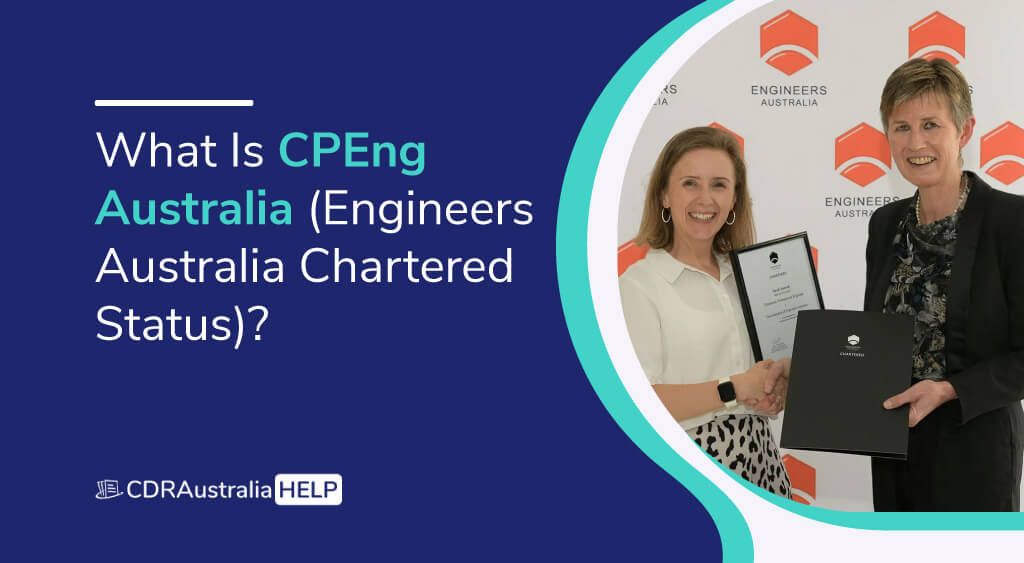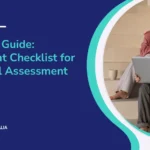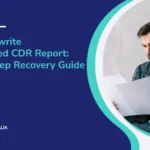
Being a CPEng Australia demonstrates your dedication, experience, abilities, and industry competence. Engineers Australia, Australia’s most professional engineering society, permits its members to obtain the title of chartered engineer, which opens up doors of options for them. Engineers have transformed lives in various ways, including education, health care, agriculture, building, transportation, communication, and general societal progress. Chartership is a professional honor bestowed for gifted, creative, and forward-thinking engineers. The following article explains how to become a chartered engineer with Engineers Australia.
Table of Contents
How to Obtain and Maintain EA Chartered Status?
Many engineers wish to immigrate to Australia and apply for engineering registration every year. Engineers Australia, or EA, is the designated organization in Australia for assessing and certifying engineers as qualified professionals in engineering jobs. Engineers may help a country grow in various ways, including agriculture, building, transportation, education, health care, communication, and general development.
Obtaining chartered status is the next important goal in an engineering career. Chartered status is a credential that gives you international recognition and, more importantly, confirms that you are competent to practice engineering and lead a team of engineers. Professional engineers, engineering technologists, engineering associates, and engineering managers who have earned chartered status have demonstrated their commitment to fulfilling the ever-increasing demands and needs of engineering in today’s world.
You must be qualified for membership in Engineers Australia to become a chartered engineer.
Eligibility Requirements
- You have EA membership or are eligible to join as an Engineers Australia member
- Professional development period including three years of engineering experience
Membership Grades
Chartered, Honorary Fellow, Fellows, Members, Graduate, Student, Affiliate are the various membership levels offered by Engineers Australia. Members with Fellow, Member, or Honorary Fellow grades are eligible for the Chartered Engineer status.
The Chartered Pathway
Engineers Australia members must go through a six-step procedure to get chartered and they are:
- Self-Assessment
- Industry Review
- Enroll for Chartered
- Chartered Evidence
- Professional Interview
- Chartered Status
Self Assessment
In the self-assessment process, candidates must establish if their present knowledge and skills in the sector align with Engineers Australia’s chartered competencies. Engineers Australia includes parts for each engineering occupation in the Australian Stage 2 competency requirements – Professional Engineers, Engineering Technologists, and Engineering Associates. The candidates must rate themselves in the aspects described by Engineers Australia Stage 2 Competencies on a scale of ‘Developing, Functional, Proficient, or Advanced.
The components are divided into several groups, including –
Technical Expertise
It demonstrates how well the applicant applies engineering technology to develop novel solutions.
Responsibility to the Community
It displays how successfully the candidate collaborates with their peers, clients, superiors, and subordinates and how well they solve problems and manage risks.
Personal Commitment
Demonstrating how the candidate handles ethical challenges, demonstrates their professional responsibility, and expands their abilities.
Workplace Value
It indicates the applicant’s talents as a leader, planner, and originator of Engineering activities and their ability to work collaboratively with others.
What do the Four Grades Reveal About the CPEng Australia Candidate from EA?
Developing
The candidate is still learning and may require supervision when practicing.
Functional
This refers to an applicant’s ability to work freely and without supervision.
Proficient
This refers to an applicant’s ability to work independently and instruct and oversee others.
Advanced
This indicates that the candidate is a strong leader who can make choices, have a broad knowledge base, and train others.
Engineers Australia provides candidates with advice on applying for the chartered title and continuing professional development based on their grades. You can complete a self-assessment procedure as many times as the candidate desires.
The Industry Review
After completing the assessment process and receiving a grade, the candidates must now seek input from their peers on their Engineers Australia chartered abilities. The candidates will not proceed to the next phase until they have received a ‘Functional’ Rating. However, if they have a ‘Developing’ grade, they can start with the Industry Review.
The industry evaluation procedure is not time-limited. It creates proof statements and seeks input from its classmates. They can revise their self-assessment rating and undertake a new industry review if they choose to.
Whom can you Consider as an Industry Reviewer?
- If the engineer is already a chartered member of EA or a member of the Engineers Australia Team, he is qualified to be an industry reviewer of a candidate.
- A minimum of seven years of engineering experience is required.
- They should be in the same field as the applicant and understand what they do. It is not, however, a must. They can come from any industry, but they must present supplementary documents.
- It should also be their own volition to submit a review to the candidate. A reviewer does not have to be a Chartered Engineer.
- EA also gives detailed instructions on how to perform the review process to the reviewers.
Enroll for Chartered
After receiving a Functional or above rating, applicants can enroll in the chartered application. At this point, applicants must pay the chartered Engineer Australia fee and submit their CV and Continuing Professional Development record.
The applicant should have completed and submitted their industry review by this time. In addition, the candidate must specify the areas of knowledge they want to pursue chartered status in.
What is an Area of Practice?
The Area of Practice can be thought of as their “purpose.” It merely shows the applicant’s desired field of work. In various practice areas, the applicant can become a Chartered Engineer. Engineers Australia offers a comprehensive list of Areas of Practice, such as System Engineering, Project Management, Civil Engineering, Asset Management, Environmental Engineering, and others.
Chartered Evidence
Chartered Evidence is a collection of presentations, documents, drawings, emails, reports, and other materials that you may use to demonstrate an applicant’s engineering abilities to get CPEng Australia certification. For each of the 16 competencies you ranked throughout the Self-Evaluation process, you must produce sufficient verification. Engineers Australia has compiled a complete list of which types of Evidence are eligible for certain types of competencies. So, applicants are required to submit one.
When they enroll for the chartered application, Engineers Australia assessors examine all applicants’ materials, including their self-evaluation, CV, Areas of Practice, and CPD log. Within three weeks, the applicant is asked to engage in an evidence conversation, a phone-based conversation.
Following this discussion, the applicant will know what chartered proof they should submit for official review. The candidate has the right to ask questions to better understand the expectations. The applicant can upload the CPEng-required chartered evidence papers after the evidence discussion. After submitting the chartered Evidence papers, they are evaluated for around five weeks.
Professional Interview
When the assessors have evaluated the chartered evidence and considered it sufficient, the candidate will be called to a professional interview. You can book a professional interview session within four weeks of the review’s completion. During the hour-and-a-half interview, the candidate may be asked to present or explain the chartered Evidence they supplied with their application. The interview panel would consist of one Engineers Australia assessor and a panel of engineers from outside industry.
Chartered
The completion of the interview will be sent to the candidate via email, together with the candidate’s chartered Award and Areas of Practice. After some time, Engineers Australia will give the candidate a certificate verifying their chartered status. Engineers Australia will provide the applicant with necessary information and guidance on how to get chartered Status if the candidate does not achieve it. They will also be given the option of submitting further papers, providing additional information or Evidence, and returning for a personal interview. On the other hand, candidates have the right to appeal Engineers Australia’s decision if they consider it is unjustified based on their Evidence.
Key Benefits of Becoming an EA Chartered Engineer
Global Recognition
Engineers who have earned chartered status with EA are acknowledged internationally for their professionalism, experience, abilities, and educational qualifications. As a result, chartered engineers can work with businesses worldwide if they have the appropriate work permits.
Leadership and Career Development
Chartered engineers can improve their competencies by being examined through the industry review process based on a set of industry standards. Engineers must demonstrate that they fulfill all 16 required competency requirements to get chartered status.
Professional Recognition
Professional organizations, governmental and non-governmental entities, and businesses worldwide recognize chartered Engineers. As a chartered engineer in Australia, you can work as a senior engineer or consultant in any nation.
Conclusion
We can assist you in achieving the chartered engineering Credential by guiding you. CDRAustraliaHelp has professional writers that will aid you in writing your report on demand based on their years of expertise in assessment intake. The EA criteria are well-known, and we meticulously follow each regulation to ensure that your assessment is conducted correctly. CDR reports, RPL reports, KA02 reports, Stage 2 competence reports, and a variety of additional high-quality reports are available upon request.





